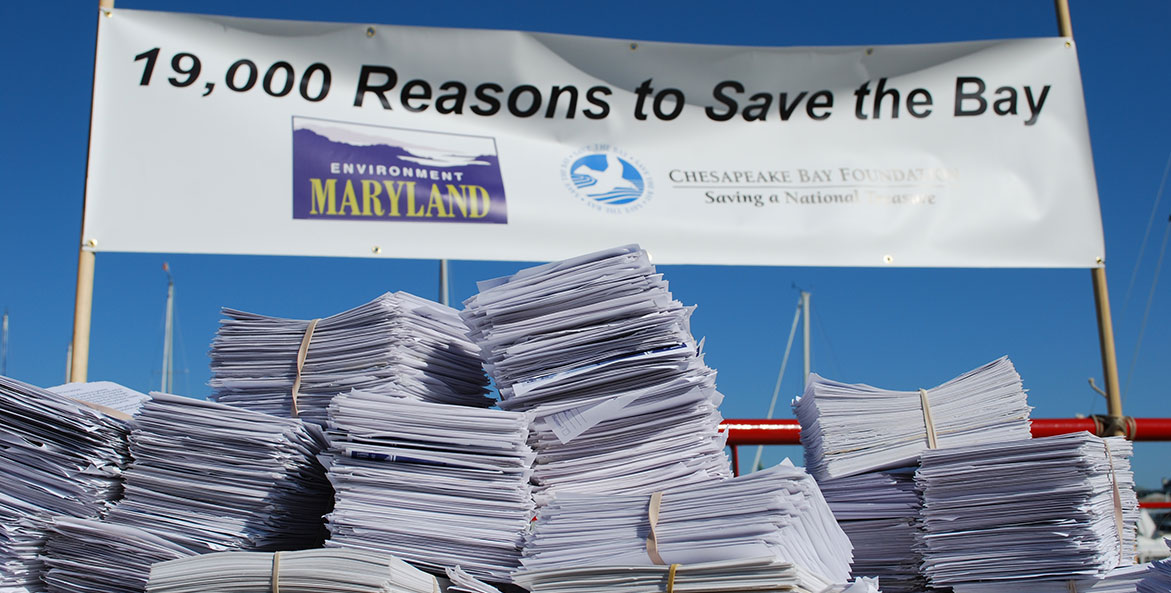In this new world of social distancing, we have had to change some of the ways that we advocate for the Bay and its rivers and streams. Here are just a few tried-and-true ways you can still speak up for our local waters in these unusual times:
Join Our Action Network
As simple as it might be, joining our Action Network is a great way to begin advocating for the Bay digitally. You’ll receive all the latest news and updates about our advocacy efforts and decide which clean water issues are most important to you and how you can get involved.
Spread the Word
It’s human nature to trust the words of your friends and family more than anyone else. So whether you’re sharing an informative blog post on social media or a petition with your friends and family via email, one of the easiest, most effective ways to advocate is to spread the word to the people you know the best.
Take Action
Our Action Center is regularly updated with advocacy actions on the local, state, and federal levels. From sending a message to your representative to calling your county council member to signing a petition standing up for clean water, check out all the ways you can take action for the Bay!
Write a Letter to the Editor
Writing a letter to the editor helps to frame the debate around an issue, stimulate discussion, and inform the public. Equally important, your elected officials read the paper, too. Whether you're jeering or cheering, you're leveraging the media to get attention.
Contact Your Elected Officials
One of the most powerful things that you can do as an advocate for clean water is to communicate directly with your local, state, and federal leaders. Start by finding who represents you at the local, state and federal levels. Once you know who your elected officials are and how to contact them, you can reach out in a few ways:
- Reach out to them on social media. Many decisionmakers have a social media presence, and their accounts are checked regularly by staff. A tweet or Facebook post tagging them to ask them their stance on an issue or urge them to vote a particular way is a quick and effective way to reach out.
- Email them. While a handwritten letter is an incredibly strong advocacy tool, the pandemic has reduced the timeliness and effectiveness of this tool because of changes in how offices are operating. Writing an email is almost as effective and is pandemic-proof. Not sure where to start? We have a few tips to help you write a compelling email.
- Call them. Calling your elected officials is even more effective than writing an email: You can organize your thoughts much like you would in a letter but by speaking to your legislator’s staff, you can add additional weight to the issues you care about. Making the call can be intimidating, but we have a few tools to help you prepare.
- Schedule a meeting. Elected officials meet regularly with their constituents. Meetings are perhaps the most effective way to advocate. While social distancing guidelines have restricted our ability to meet face-to-face, many legislators and their staff have started meeting with their constituents over Zoom or other web conferencing tools. Learn more about how to schedule and prepare for a meeting with your legislator here.
Vote for the Bay
Participating in our democracy is critical to saving the Bay. Across the watershed, communities are working hard to reduce pollution from runoff, sewage, and agriculture. But while gains have been made, the recovery is fragile. The Bay and its rivers and streams still have a long way to go to be healthy—and they need you to speak up for them with your vote.
With Election Day right around the corner, make sure to have a plan on how to safely cast your vote. The pandemic has changed the way many states will be voting. Head to vote411.org to find resources for all the logistics surrounding voting—including voter registration, election rules, and finding your polling place. The link will open in a new window.
There are only four years left before the 2025 Chesapeake Clean Water Blueprint deadline and it’s more important than ever for Bay advocates to speak up. While the COVID-19 pandemic has changed the way we operate, we can still advocate for clean water from the safety of our homes.




